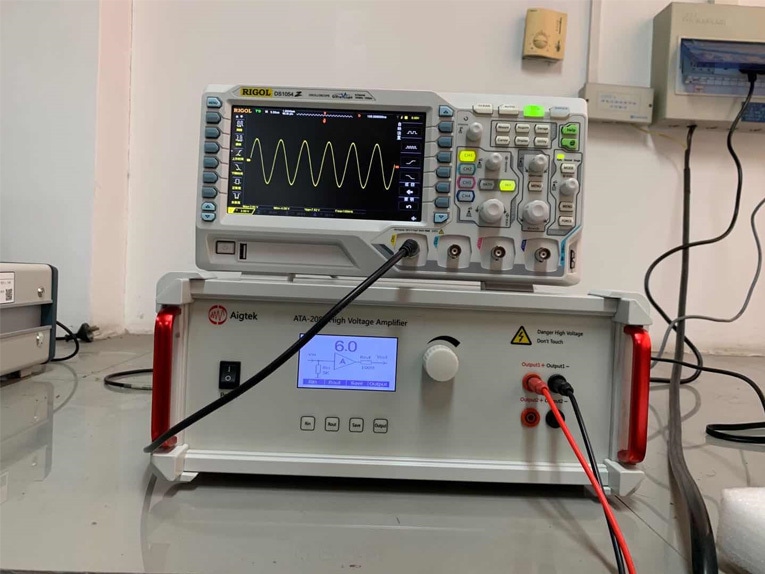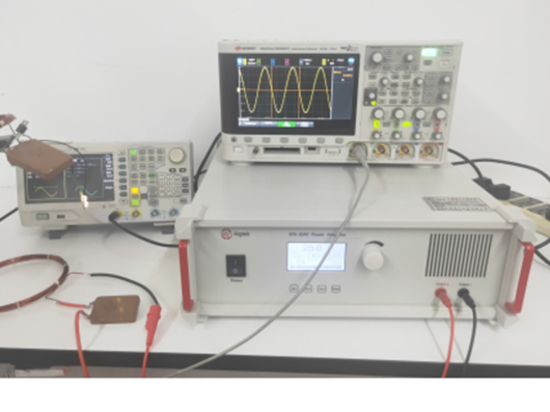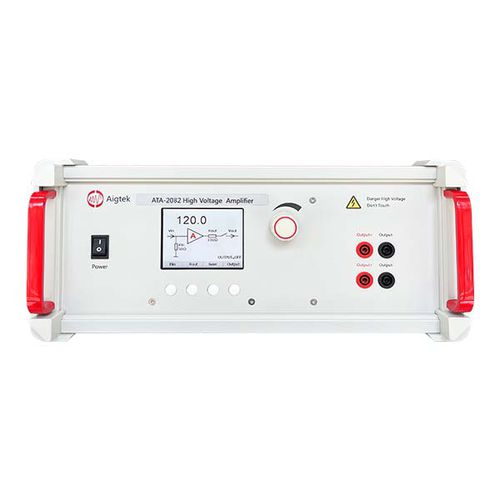
#Industry News
ATA-2082 high voltage amplifier drive piezoelectric ceramic test application
Research on temperature change of PZT4 piezoelectric ceramics
Due to its low price and stable piezoelectric characteristics, PZT4 piezoelectric ceramics have a wide range of applications in high-power applications, especially in the field of strong fields. As the driving voltage of the device increases, the device will produce heat, and then As a result of the degradation of device performance, it is particularly important to explore the heating of PZT4 piezoelectric ceramics in a strong electric field. By applying a strong electric field to the PZT4 piezoelectric ceramic vibrator, measuring its heating, and exploring the heating mechanism of PZT4 piezoelectric ceramics under a strong electric field. The temperature rise of PZT4 piezoelectric ceramics is particularly important for high-power piezoelectric ceramic devices.
Experiment name:
Research on temperature change of PZT4 piezoelectric ceramics
Research direction:
PZT4 piezoelectric ceramics temperature rise change research under strong electric field
Test purpose:
To explore the application of piezoelectric ceramics in the high-power field, explore the effect of piezoelectric ceramic temperature changes on material characteristics under high-power conditions, and find a suitable driving method to reduce the impact of piezoelectric ceramic heating on device characteristics. This high-power The application of piezoelectric ceramic devices plays a vital role.
Test equipment:
Oscilloscope, signal generator, ATA-2082 high voltage amplifier (high voltage amplifier) Computer (processing data) Temperature monitor (monitoring temperature changes) DSP720 (monitoring current)
experiment procedure:
1. Place the experimental instrument in a suitable location, connect the experimental instrument, and turn it on after checking that it is correct;
2. Put the PZT4 ceramic piezoelectric vibrator to be tested in the fixture;
3. Provide an excitation signal (sine wave) to the high-voltage amplifier through the signal generator, adjust the amplification factor of the high-voltage amplifier, and output a certain amplitude voltage to be driven on the piezoelectric vibrator;
4. Use a temperature monitor to monitor the frequency and the temperature under the voltage amplitude;
5. Repeat the experiment by changing the voltage amplitude and record the data;
6. Process the recorded data; organize the instrument after the test.
Experimental results:
According to the temperature change of the PZT4 piezoelectric ceramic vibrator tested in the experiment, organize the data and draw a graph to sort out the heating curve. The left picture is the monitored current change, and the right picture is the temperature change of the PZT4 piezoelectric vibrator. With the input power With the increase of, the piezoelectric vibrator has a significant temperature change.
The performance of the high-voltage amplifier in this experiment: ATA-2082 high-voltage amplifier provides a stable voltage for the experimental test during the whole experiment process, which provides the necessary conditions for the experiment to proceed smoothly.







